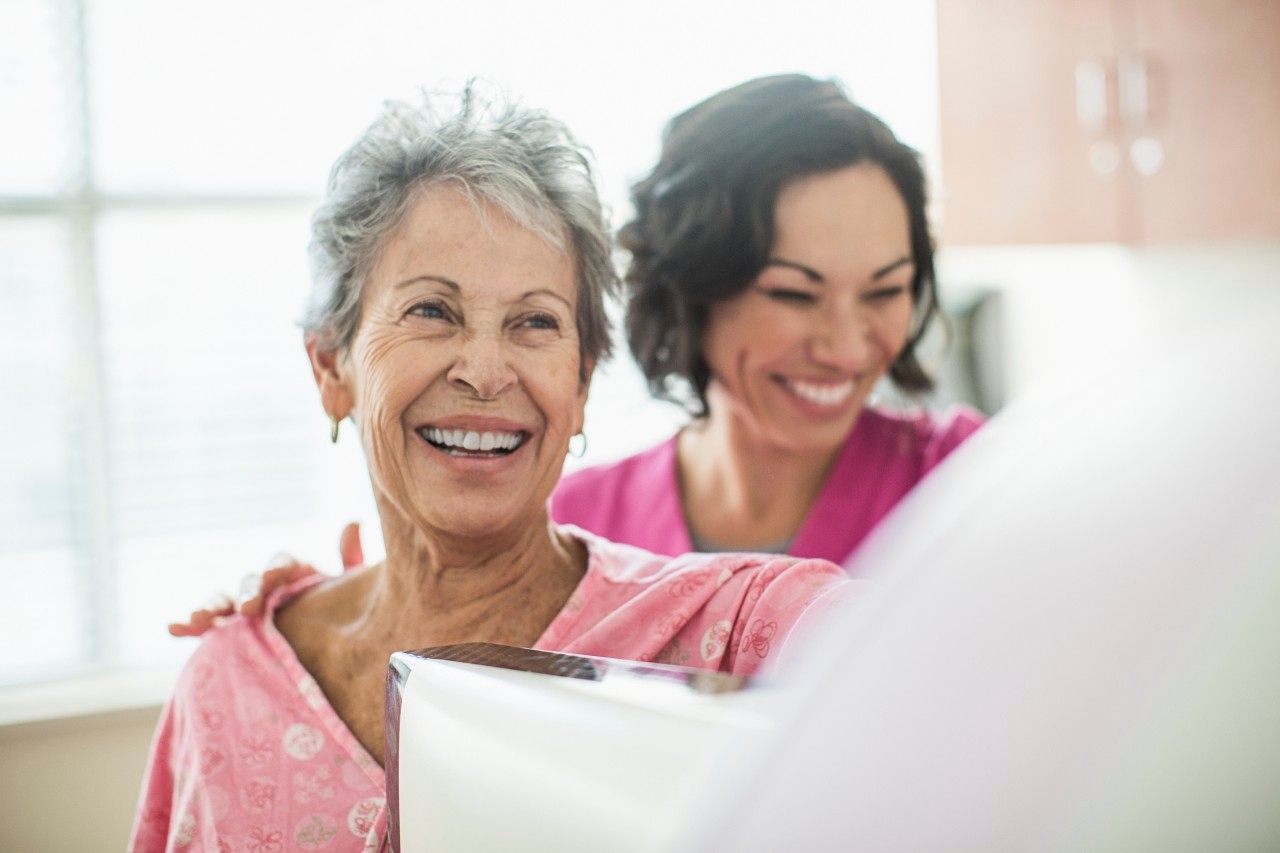A More Comfortable Mammogram

The new three dimensional imaging mammogram has pluses, but it won't eliminate unnecessary care. Here's what you need to know about "digital tomosynthesis."
In a standard mammogram, a technician takes two x-rays of each breast from different angles: top to bottom and side to side. You know the drill: your breast is compressed between two glass plates, and later a radiologist reads the pictures, examining any irregular whiter areas — sometimes called “shadows” — that may indicate cancer cells, which are denser than healthy breast tissue.
Now a new kind of three dimensional (3-D) mammogram, called “digital tomosynthesis,” has been approved by the U.S. Food and Drug Administration (FDA). You’ll still need to put your breast on a plate, but it won’t be squeezed so much. In about 7 seconds, the device takes 11 images from various angles. That data is then assembled into a clear 3-D image. To quote the nonprofit breastcancer.org, ordinary mammograms are “like standing on the edge of a forest, looking for a bird somewhere inside. To find the bird, it would be better to take 10 steps at a time through the forest and look all around you with each move” — something like a 3-D breast screen.
Whether it’s worth the trouble to seek out, or not, depends on why you’re getting screened. Many women have been getting yearly mammograms beginning in their 40s, along with performing self-breast exams. The current recommendation is to wait until your 50s, then get a test every two years. Talk to a gynecologist about the appropriate timing for you, especially if you have a family history of breast cancer. If you’re getting tested because you’re particularly at risk, or if you are in your 50s and have skipped mammograms because you having your breasts compressed, you might seek out a 3-D exam.
Breast x-rays miss cancers about 20 percent of the time, according to the FDA. They also produce false positives. If your x-ray leads to questions — perhaps simply because your breasts are dense — you’re typically referred for a follow-up, often an ultrasound, which catches more cancers but also produces false positives. Middle-aged women generally know more than one woman who has gone through a draining breast-cancer scare.
You might now get a 3-D follow-up instead. It isn’t foolproof but an improvement: in one study, the combination of an x-ray followed by the 3-D technology found 40 percent more invasive cancers and reduced false positives by 15 percent compared to an x-ray alone.
Insurers may not cover a 3-D exam, and some centers charge women an extra $50. You may need to travel to find one. The new technology also involves more exposure to radiation, although this risk may be minor. (By the way, you have been tempted to try “thermograms” or “nipple aspirates,” which providers have described as alternatives or complements to mammograms, but the FDA has found no evidence to support those claims).
The big risk of all breast cancer screening is unnecessary anxiety and unnecessary surgery. False-positives on screening tests aren’t the only issue. Even biopsy results can be unclear and require a second opinion. Well-meaning specialists and doctors may go on to detect true cancer cells — but baby ones that would never develop into a real problem. An analysis of three decades of testing concluded that 1.3 million American women had been diagnosed with cancer when they actually didn’t require treatment. In 2008 alone, these authors concluded, 31 percent of all breast cancers diagnoses were a mistake.
A 2011 Cochrane meta-analysis painted a bleak picture. Overall, “for every 2,000 women invited for screening throughout 10 years, one will have her life prolonged and 10 healthy women, who would not have been diagnosed if there had not been screening, will be treated unnecessarily. Furthermore, more than 200 women will experience important psychological distress for many months because of false positive findings. It is thus not clear whether screening does more good than harm,” the authors write.
It’s not cynical to describe diagnosing and treating breast cancer as a business. People make money in medical care of all kinds. Screening leads to more customers. Once a threat has been detected, however slim, it’s very hard to pass up treatment.
On the other side: you could be one of the women who gets care in time to beat a deadly cancer. Speak candidly to your gynecologist about your concerns and decide at what age and how often you’d like to get screened.
Updated:
March 30, 2020
Reviewed By:
Janet O’Dell, RN